The idea is to make a battery setup in such a way that the user can use 1 or 2 or 3 18650 Lithium cells. The circuit would draw power via USB to charge the setup as well as run the application circuit after the boost section. The load is around 500mAh.
An p-Channel mosfet is used to act as a switch for the final output. USB-5v is connected to the gate of the mosfet, the output of the UV protection circuit is connected in parallel to the drain of the mosfet. So as soon as USB is shut off, the circuit would draw power from the battery pack that is connected. Circuit reference from ESE answer.
The main reason to use the setup was to allow the user to use 1S by default. If the lifetime of the application circuit was to be extended, the user attached another 1S to the setup. So the boost section ( 3.7v-4.2v to 5v) remains the same.
Questions
- Is it safe to use 3 separate charging ICs and 3 separate 1S battery protection ICs to charge 3 separate Li+ batteries?
- Is is safe to draw power by connecting the output of the protection circuits in parallel?
I came across TP4056 modules on Amazon. So looking at the reference design, I was wondering if the above setup would be possible and safe to execute?


